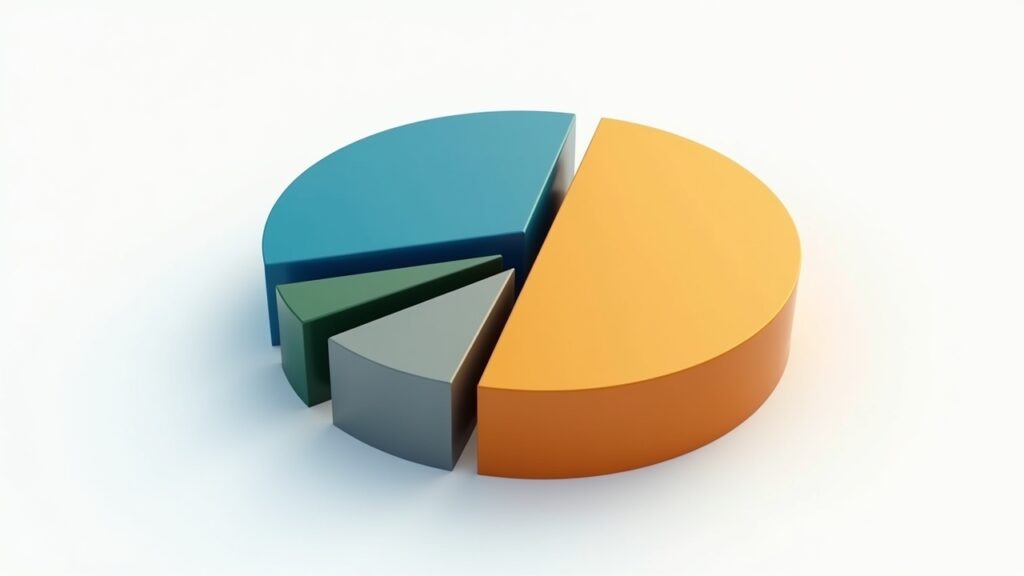Advertisements
Let me tell you, when I first started investing back in 2015, I thought index funds and ETFs were basically the same thing! Boy, was I wrong. After losing about $500 in unnecessary fees (yeah, that still stings), I finally learned the crucial differences between these two investment vehicles.
Here’s the thing – both index funds and ETFs can help you build serious wealth over time. However, choosing the wrong one for your situation is like wearing flip-flops to a snowball fight. Trust me on this one.
So, let’s dive into what I’ve learned through years of trial, error, and eventually some sweet victories!
What Are Index Funds, Really?

Okay, so index funds are basically mutual funds that track a specific market index, like the S&P 500. When I first invested in VFIAX (Vanguard’s S&P 500 index fund), I loved how simple it was. You buy shares at the end of each trading day at whatever the closing price is.
The minimum investment threw me for a loop though – most require at least $3,000 to get started. I remember scraping together every penny from my side hustle just to meet that threshold. But here’s what makes them special: they automatically reinvest dividends, which means your money compounds without you lifting a finger.
Plus, there’s no bid-ask spread to worry about. The bid-ask spread was something that confused me for months when I started!
ETFs: The New Kid on the Block
Now, ETFs (Exchange-Traded Funds) are a whole different animal. These bad boys trade throughout the day just like individual stocks. I’ll never forget my first ETF purchase – SPY, the SPDR S&P 500 ETF – because I placed a market order and got hit with a terrible price during a volatile moment!
The beauty of ETFs? You can start with just one share. When SPY was trading around $300, that meant I could invest without needing thousands upfront. However, you gotta watch those trading commissions (though most brokers offer commission-free trades now, thankfully).
ETFs also give you more control. Want to set a limit order? Go for it. Need to sell in the middle of the day? No problem. This flexibility was game-changing when I needed quick liquidity during an emergency car repair.
The Tax Efficiency Battle
Here’s where things get interesting – and where I learned an expensive lesson. ETFs are generally more tax-efficient than index funds because of something called the “in-kind creation and redemption” process.
Basically, ETFs can shed their lowest-basis shares without creating taxable events for shareholders. Meanwhile, when other investors sell their index fund shares, you might get stuck with capital gains distributions. This happened to me in 2018 – got slapped with a $1,200 tax bill from my index fund’s distributions even though I didn’t sell anything!
That being said, in tax-advantaged accounts like IRAs, this difference doesn’t matter much. So if you’re investing in your 401(k), both options work great.
Which One Should You Choose?
After years of using both, here’s my take. Index funds rock if you’re the “set it and forget it” type. They’re perfect for automatic investing since you can invest exact dollar amounts. I’ve got my 401(k) contributions going straight into index funds every two weeks.
On the other hand, ETFs shine when you want flexibility and tax efficiency in taxable accounts. Plus, if you’re starting with less money, being able to buy just one share makes ETFs super accessible. My nephew just started investing with $50 in VOO (Vanguard’s S&P 500 ETF).
Actually, here’s a weird quirk – some funds like Vanguard offer both versions of the same investment. VFIAX (index fund) and VOO (ETF) both track the S&P 500 with nearly identical returns. The main differences? Minimum investment, trading flexibility, and those pesky tax implications.
Move Ahead in the Investment Game

Look, whether you choose index funds or ETFs, you’re already ahead of 90% of people who keep their money in savings accounts earning 0.01%. Both options offer low costs, instant diversification, and historically solid returns.
Start where you’re comfortable – maybe that’s an ETF with your spare $100, or perhaps you’ve saved up for that index fund minimum. The most important thing? Just start. Time in the market beats timing the market every single time.
Remember to consider your account type, investment timeline, and how hands-on you want to be. And hey, there’s no rule saying you can’t use both! I currently hold index funds in my retirement accounts and ETFs in my taxable brokerage.
Want to learn more about building your investment portfolio? Check out other helpful guides at Plan Wealth – we’ve got your back on this financial journey!


